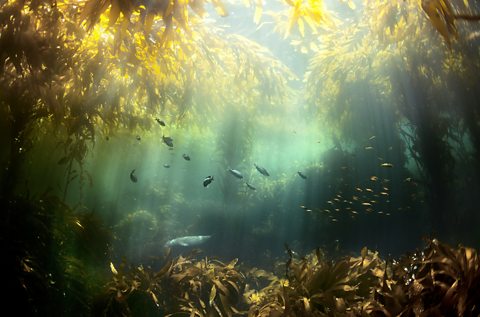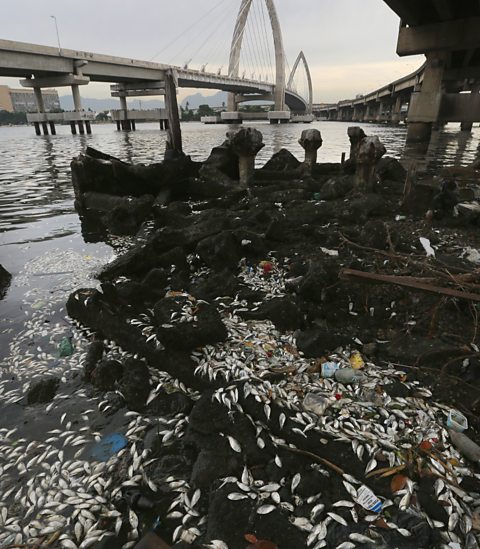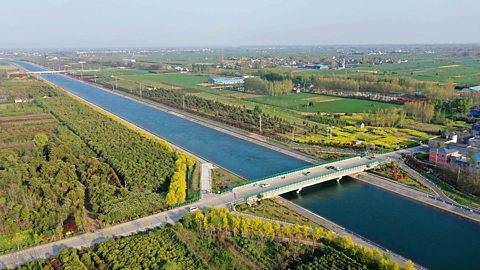What do you know?
How many oceans are there on Earth?
The world's oceans have been traditionally split into four areas: the Pacific, Atlantic, Indian and Arctic Oceans. In recent times though, the Southern or Antarctic Ocean has been recognised as a fifth area.
Key points
- Oceans are used as a resource for activities including fishing, mining and transportation.
- The ocean is under threat from overfishing, pollution and damage to coral reefs.
- There are a number of ways that the ocean is protected, including international law.
Opportunities and threats
The ocean is the vast body of water that covers nearly three quarters of the Earth’s surface. The ocean is actually one large body of water but it is given different names according to where it is. The main areas are The Pacific, The Atlantic, The Indian, The Southern and The Arctic Oceans.
The importance of the ocean
The oceans are extremely important to life on Earth and help keep the Earth’s temperature stable. They do this by absorbing the heat from the Sun and warming the atmosphereThe layers of gases that surround the Earth.. If it wasn’t for the oceans, life as we know it could not exist on Earth.
The oceans also play a vital role in removing carbon dioxide from the atmosphere and providing oxygen. At least 50-80 per cent of all oxygen comes from planktonMicroscopic organisms that drift or float in the water., plants and algaeA type of plant with no stems or leaves that grows in water or on damp surfaces. that photosynthesisThe process by which plants transform energy from sunlight into a usable form and release oxygen as a biproduct. in the oceans.

The ocean is also a valuable source of food. Over 90 million tons of seafood is caught each year from the oceans, providing a valuable source of food to millions of people worldwide.
Humans also use the oceans for collecting mineralsMinerals are solid substances that occur naturally. such as salt, sand and gravel. As oil supplies on land run out, oil companies are increasingly building oil rigs to pump oil from under the sea bed.
Ocean transportation has been vital for tradeThe buying and selling of goods. for centuries. Currently 90 per cent of all trade is transported by sea. Other uses include recreation whereby people use the oceans to swim and take part in water sports. Increasingly, the oceans are even used for generating renewable energyRenewable energy resources are energy sources that cannot run out such as tidal, wind and solar energy. using the power of the tides or as a place to locate wind farms.

Threats to the ocean

Despite being such a valuable resource, our oceans are under threat. Rising populations have meant that the demand for seafood is high, so many fish stocks have become overfished and some species have disappeared.
Another threat to the oceans is from pollution. The waste that humans produce, includingsewageLiquid waste which is released from kitchens, bathrooms, toilets, laundries and laboratories., is often washed or blown into the oceans. Increasingly, man-made products are being dumped in the sea, such as plastic bags and fishing nets, as well as chemicals such as nitrogen and phosphorous used in farming, which harm sea creatures.

Question
How much of The Earth’s surface is covered by the ocean?
The ocean is the vast body of water that covers nearly three quarters of the Earth’s surface.
Coral reefs
Coral reefs are large structures made up of millions of tiny creatures called coral polyps. Coral reefs cover less than 0.1% of the world's ocean surface but provide a home for at least 25% of all marine species. There are more than 2000 species of coral in the world, and most are found between 30° north and 30° south of the equator. The most well-known and largest coral reef is The Great Barrier Reef which is found off the east coast of Australia.

Coral reefs are under threat. Tourists sometimes damage coral in search of souvenirs or by trampling on them. Pollution from boats and jet skis also damage reefs. Climate change leading to a global warming of the ocean is another threat causing stress to the coral, which leads to reef bleaching when algae within the coral dies leaving the coral vulnerable to disease.
Plastic in the ocean
Every year, millions of tonnes of plastic make their way into the ocean.
Click on this diagram to learn more and find out what we can do.
Managing the ocean
The ocean is a valuable resource but it is also easily polluted and damaged. This means that it requires careful management and protection.
Management of the ocean happens at both a national scale, where countries manage the water around their coastline, and at an international scale. As the oceans are used by many different countries, they have to be managed by countries working together.
The United Nations Convention on the Law of the Sea (UNCLOS) sets out rules for how the sea can be used whilst also remaining a global commons. A global commons is an area that no one controls but that everyone has access to.
UNCLOS also contains laws meaning that countries must protect their own area of the ocean and should 'prevent, reduce and control pollution of the marine environment from any source'.
There are also various non-governmental organisations (NGOs)A non-profit group that works independently of any government. who help to monitor the sea. These include Greenpeace, Oceana, and the Sea Shepherd Conservation Society. Whilst having no official powers, these organisations play an important role in monitoring and protesting against damaging actions taking place at sea including whaling and nuclear testing.
Question
How does UNCLOS aim to protect the marine environment?
UNCLOS means countries are required to take the necessary measures, to 'prevent, reduce and control pollution of the marine environment from any source'.
Play the Planet Planners game! gamePlay the Planet Planners game!
Make decisions for the planet in this KS3 geography game.

More on Environment, resources and conflict
Find out more by working through a topic
- count3 of 9

- count4 of 9

- count5 of 9

- count6 of 9
